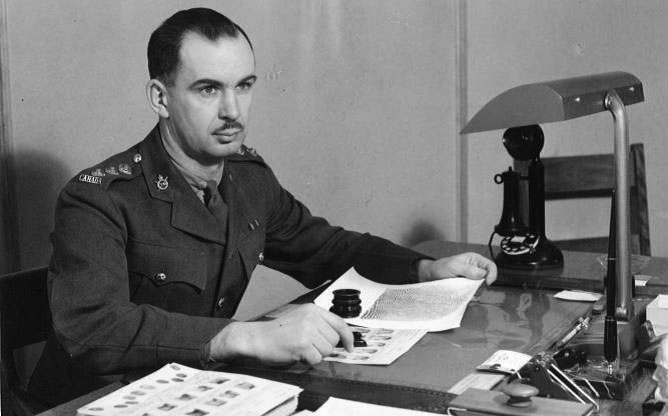75th Anniversary of the National Identification Services
September 6, 2022 - Defence Stories
On 09 September, 2022 National Defence identification Services (NDIS) will be celebrating its 75 anniversary. The present identification services were originally stood up to provide identification cards for their personnel. This was initiated as a result of the Geneva Convention, which required that all military personnel and those working with them including Padres and Medical Staff carry identification cards (and military personnel identity discs) so they could be identified during war situations. Prior to this, the pay book had been used for identification. Since the inclusion of personal identification by fingerprints on one’s personal file was initiated in the RCAF in December 1940 and the Canadian Army and RCN in May 1941, these files have become more complete and refined for the original purpose of identification of a person in case of death. The joint identification service was set up originally as the Canadian Armed Forces Identification Bureau under Joint Organization Directive Number 2 dates 09 September 1947, under control of Air Force headquarters. NDIS currently falls under VCDS/DGDS/DPSIM. Although fingerprints were retained on a central file for the purpose of identification of deceased persons and for a Criminal Index check through the RCMP (security clearances) on selected military and civilian personnel in such areas as Intelligence, Provost, Ordinance and Postal, it didn’t become mandatory for security clearance action until implementation of Cabinet Directive 35. One main stipulation in the use of these files is that they were not to be used for investigation purposes, as they were taken for a specific purpose which did not include criminal activity. At one time the RCMP was asked to hold the prints, but this was rejected as their files consist of prints of persons who have committed a criminal offence and are recorded under the Identification of Criminals Act. Today, NDIS has the second largest fingerprint repository in Canada, maintaining in excess of 250,000. The identification card has advanced with improved technology. In 1990 action was initiated to computerize all the records of personnel issued identification cards. This provided a much faster and more positive means of controlling the issue and use of identification cards issued by NDIS. The fingerprint section is still considered a manual bureau as the technicians continue to train and use the Henry System of Fingerprinting which was invented in 1901 by Sir Edward Henry. However NDIS is currently on the cusp of digital fingerprinting with the Digital Biometric Collection & Identification Management (DBCIDM) project
.jpg)
Caption
Fingerprint technicians receiving instructions
.jpg)
Caption
CAIB Identification Unit
.jpg)
Caption
Identifying fingerprints
.jpg)
Caption
Searching in CAFIB Fingerprint Files

Caption
Visually identifying fingerprints
Page details
- Date modified: